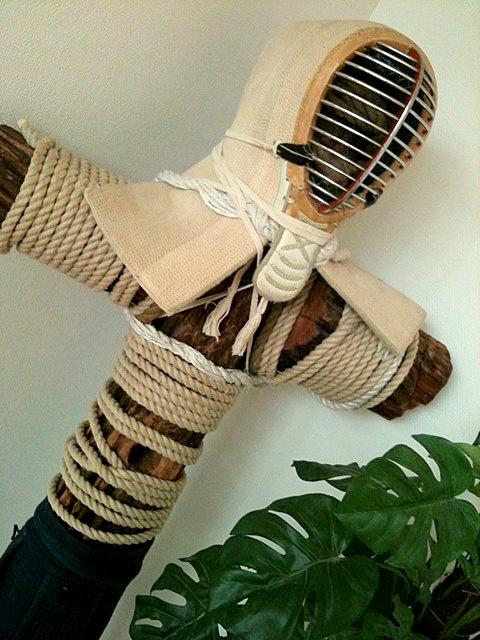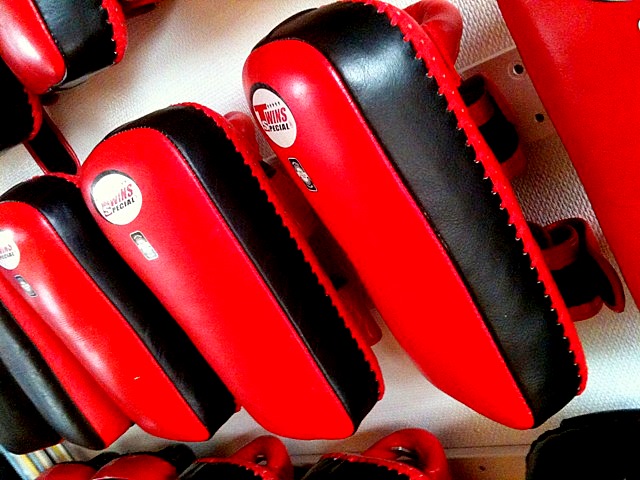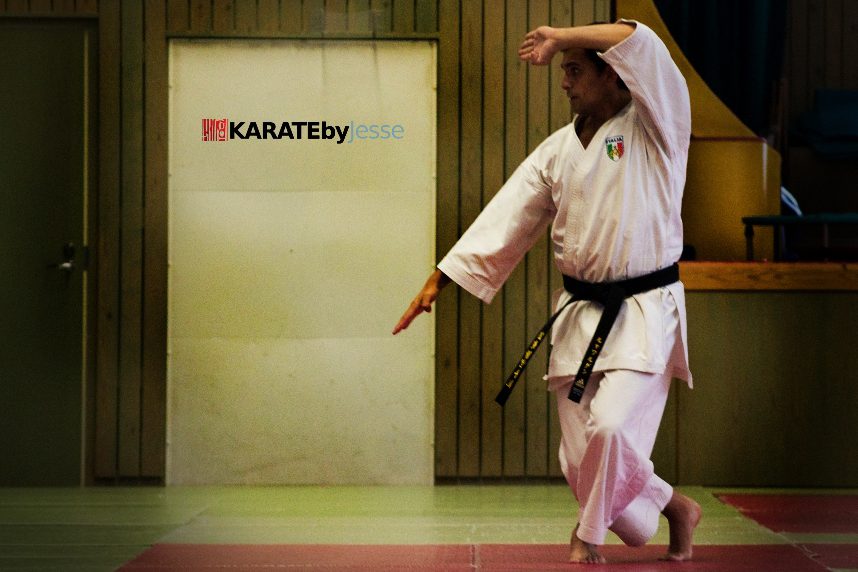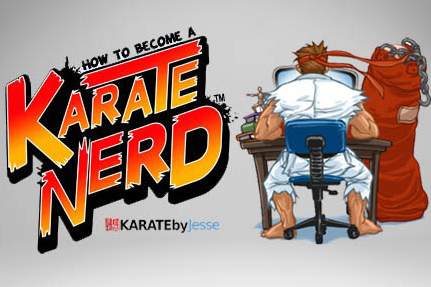Note: This is part two of “The Numb-Chuck ABCs”. If you haven’t read part one, you really should. It will make you smart, rich and sexy.
Okay, time for part two in my attempted answer to a very handsome e-mail (yes, e-mails can be handsome) asking me how one should use the nunchaku (“numb-chuck”) in a more practical way, other than the flashy XMA (extreme martial arts) styles that we all know too well from youtube.
I’ve given some thought to how this post should be constructed, and come to the conclusion that I’ll not list a trillion different techniques, defenses, swings or moves.
Because, sure, that’ll probably make some people go “Wow, that’s perfect for me!”, but most people will probably go “We don’t do that in our style, this post is bull crap”.

I mean, basically every major Okinawan Kobudo organization and/or style has their own ways and methods of using the nunchaku. But, while they all might use different techniques, the underlying principles never change.
Let’s focus on that.
Therefore, I’ll try to walk in “the middle of the road“, and give a couple of very important, yet pretty general, advice on how to effectively use and handle the nunchaku in a combative setting, from a non-style-specific point of view.
This doesn’t mean that I’ll write a bunch of abstract ideas or principles though. Oh no. While that would indeed make me sound very deep and smart, I believe in giving practical advice, especially when it comes to more dangerous things like weapons.
Just to be clear what this post is not about, have a look at this video (the good stuff starts at 0:20):
Got it?
Great.
So let’s begin.
Advice #1: Lengthen your line.
The nunchaku, contrary to what many people believe (?), is a long weapon. Long, long, long. It can be made short of course, but not utilizing it’s length is like driving around in your car with the hand brake on. In fact, the nunchaku is often referred to as the “portable bo” for a reason.
But, it looks pretty short, doesn’t it?
Well, I’d say that’s because people use it like it’s short. Compared to our longest weapon (the bo), the nunchaku is not that short.
Here’s a picture to give you an idea.

Of course the bo can be held at its tip, making it longer than the nunchaku can ever be, but that’s not the point. Do a normal overhead strike (jodan uchi) with the bo, and then with the nunchaku, and you’ll quickly come to the conclusion that the nunchaku is no shorter than the bo.
So, the first advice is, utilize the length of the nunchaku.
But how do we do this more concretely?
Well, for starters, you can begin by holding the nunchaku in the end. Not in the middle.
Then, use big swings. Big movements. Big ashi- and tai-sabaki (leg and body movements).
The obvious problem that occurs here is of course that big movements – while reaching longer and giving more power – will take a longer time to execute, and make you open your defense more, exposing you to easy counterattacks.
But that’s why we practise.
When you succeed in constantly finding the balance between long powerful swings, and snappy short strikes, you can be considered something of a nunchaku master.
Let me end this first advice with a relevant and interesting short story (which also includes a very valuable life lesson):
Joe Hyams, in an extract from his book “Zen in the Martial Arts”, discusses a valuable lesson taught to him while studying under American Kenpo Karate founder Ed Parker. After having finished a bad kumite match in Parker’s dojo, he writes:
“Parker invited me into his small office; a small sparsely furnished room with only a scarred desk and battered chairs.
“Why are you so upset? ” he asked.
“Because I couldn’t score.”
Parker got up from behind the desk and, with a piece of chalk, drew a line on the floor about five feet long.
“How can you make this line shorter?” he asked.
I studied the line and gave him several answers, including cutting the line in many pieces. He shook his head and drew a second line, longer than the first.
“Now how does the first line look?
“Shorter,’‘ I said.”
The same goes for the nunchaku.
Lenghten your line.
Advice #2: Koshi wo hineru, kata wo tsukau.
What does a baseball, a javelin, a tennis ball, a bo, golf and a nunchaku have in common?
When using them, your hip action is the same.
Throw a tennis ball, then swing your nunchaku. No, sorry, “swing” is a bad word. Swing has the feeling that you’re just doing a movement without any power. Like when a fairy swings her fairy rod.
You should be beating.
Raw, grimey, nasty, brutal hip power, from the floor up.
If you compare this to the bo strike, there is only one major exception really. And that is, with the bo you need a “double hip twist” to prevent the bo from flying away from the centerline after each technique. With the nunchaku, you can let it all out, since the other hand is waiting to catch the nunchaku by the hip anyway.
Sounds weird?
If yes, then I can think of two possible reasons for that:
- These are things that are best experienced through other mediums than plain written text.
- You are one of “those” that never rely on raw, gritty, power in your Kobudo. Shape up!
So, to sum it up, the second advice is basically to start twisting those hips (“koshi wo hineru”).

But there’s one more thing.
I actually bunched two advices in one, for some reason.
The second thing is, use all joints. While the hip joint sure is big and powerful, and great for generating lots of dirty power, the other joints in your body shouldn’t be neglected. And when speaking of neglected joints, the shoulder joint is especially lonely and left out in the cold (while the other joints are inside playing video games).
“Kata wo tsukau.”
Use the shoulder.
In a expand/contract manner (not up/down manner!)
The same can often be said of the elbow joint too.
For maximum power, all joints need to cooperate, not just the wrist.
Advice #3: There are locks and takedowns too, you know.
“What the hell, dude? Didn’t you just tell us to lenghten our lines?”
I don’t know. Did I?
I told you to initially lenghten it, but gradually find the balance. At least that’s what I tried to say. You should be able to lenghten it and shorten it however you want. Yin and yang, you know.
And when you’ve shortened it, that’s when locks and takedowns come into play. You see, while the nunchaku may indeed be the “portable bo”, it has many interesting features which the bo doesn’t have. Like a chord or chain in the middle, which can be used for all sorts of fun.
I mean, just look at Nakamoto sensei here (who is a specialist at close quarters nunchaku combat):
All of these techniques are his own inventions.
And they hurt.
Nunchaku locks and takedowns, along with regular strikes (non swinging) are a largely unexplored area in Okinawan Kobudo.
Explore it.
But, remember this famous quote attributed to the founder of aikido, O-sensei Ueshiba
“90% of aikido is atemi [strikes]”
The deeper meaning of that quote deserves an article of it’s own.
Advice #4: Intra-manus-amphi-dexterious communication.
The above term, which I just made up because a) it makes me sound intelligent, b) gives this post some kind of scientific credibility, really means something like “how to use both hands”.
The nunchaku is the only weapon where one hand is constantly switching between being free and busy.
This I’d like to term our “passive” hand.
So, if one hand is pretty much passive (only occasionally catches and cocks the nunchaku), then what should we do with it? Swing it around the air? Just forget about it?
Of course not.
We should anchor it safely to our waist.
Keeping your free (passive) hand on your waist means you’ll always know where it is. This means, when it’s time to catch the nunchaku you just need to swing it safely to your side, where your trusted passive hand is patiently waiting.
Compare this to waving your passive hand around, trying to catch the nunchaku in mid-air. If you’d stop using those silly foam-chucks, you wouldn’t have any unbroken fingers left using this method.
So, always keeping your passive hand anchored at your hip makes your techniques safer. And, since this method doesn’t rely on your sight, you could basically be fighting a bunch of evil samurai ninjas in the middle of the night and always catch the nunchaku perfectly.
Having the free hand at the hip also makes it very easy to gain power in your strikes and swings, since you can cock the nunchaku back (no need for any extra momentum!) and dish out punishment in a nanosecond to anyone who dares question your intra-manus-amphi-dexterious communication.
Summary: Think about both your hands, and what purpose they serve in every situation.
Advice #5: One word – Makiwara
In Okinawa, the saying “The heart of Karate is the makiwara” can often be heard, and even “The heart of Kobudo is the makiwara”. I’m not sure I agree, but it is a documented fact that in the olden times many strong men of Okinawa used to regularely pound the makiwara even though they didn’t necessarily train Karate.
They just gathered in somebody’s garden, drank some beer and took turns pounding a bloody (literally!) makiwara.
Today we just use Facebook for the social (?) part, but nontheless, the makiwara still exists.
Even the Kobudo one.
Here’s how it’s used with the bo:
And here’s a close-up picture of our simple Kobudo makiwara:
The purpose of the makiwara is to give feedback.
Yes, you heard me – the purpose of a dead lump of tree with a couple of holes drilled in it, covered with old Kendo protection gear beaten beyond recognition, along with some old dusty ropes from a boat, is to give you feedback.
But you need to interpret the feedback by yourself.
Try this:
Hit the makiwara, as hard as you can (with your nunchaku).
If you don’t have a makiwara (or a moderately annoying brother/sister), just get somebody to hold a pad for you. If you’re feeling sadistic you could use pretty much any regular McDojo pad, but I recommend real, sturdy, heavy thai pads.
Here are the ones we use:
They are pretty expensive, yes (I’m saying this with a sort of middle-class-showing-off-voice here), but totally worth it. Nothing will break these puppies. But I wouldn’t try a live blade kama on them if I were you…
Back on topic.
You hit the makiwara (or thai pad).
One of two things will happen:
- The nunchaku bounces back.
- The nunchaku goes through.
The same holds true for virtually every weapon.
Option 1 is what you don’t want.
Option 2 is what you want.
Believe me, swinging the nunchaku in thin air will never be fun again once you’ve tortured your very first Kobudo makiwara. Or thai pad. But be careful, it might actually hit you in the face when it bounces back.
And when you’re done alone, get a friend:
Advice #6: Kakushi buki.
For some reason, in the Taira lineage of Okinawan Kobudo the nunchaku is traditionally always used against the hidden knife. Sometimes against the bo, yes, but most often against the knife. The Matayoshi lineage uses it against the bo more.
I’m not really sure why though, but I vividly remember even being taught nunchaku defense against the double handed knife thrusts of the yakuza, in Okinawa. (Apparently, they use both hands when they slice you up).
Whatever the reason, one thing stands clear:
The nunchaku is ideal for a hidden weapon.
Remember that locks and takedowns video I posted under advice #3? Look at it again. You can barely recognize Nakamoto sensei’s nunchaku before the kumite starts. It is concealed in his hand. And indeed, his house is filled with nunchaku hidden practically everywhere (above doors even).
The nunchaku, along with weapons like the tekko (knuckle duster) and jiffa (hairpin) is something of a “kakushi buki” (hidden weapon). An ideal street fighting weapon, for sure.

This is reinforced by the fact that there are at least four different traditional Kobudo kamae of holding the nunchaku behind the back, for easy concealment before a strike.
The nunchaku is to be concealed until the very last moment.
Not flashed in front.
Which reminds me of this movie I once saw, where the good guy spots a gang of bad guys – so he goes over to a soft drink machine, buys like ten cans of soda, takes his jacket off, puts the cans in his jacket pockets, and then beats up the whole gang using nothing but his jacket stuffed with soda cans. Just like a nunchaku.
Pretty awesome…
That’s the power of concealment.
Anyway, I had a couple of more basic advice I wanted to write, but seeing that I’m already at more than twice my usual post length, I’ll simply have to end here.
Let’s let Nakamoto sensei finish this post off (since he seems like the star of this article anyway), with this wonderful quote from one of his latest books (from the nunchaku chapter, even):
Without a certain level of enlightenment, a nation can not develop weapons of peace. More than physical or spiritual aspects, to teach one how to live a bountiful life is the true duty of a Kobudo master, an aim for which he should commit his whole heart and soul.
– M. Nakamoto, “Kobudo: Okinawan Traditional Old Martial Arts”, 2006
But no!
We can’t quit yet.
I just realized something!
What about the flashy XMA-style twirls and spins then? Should we discard them? Are they worthless when we want to use the nunchaku in a more ‘pragmatic’ Okinawan Kobudo way?
My answer will have to be…
Yes… and no.
Use cool nunchaku spins, swirls and flips until you can confidently handle the nunchaku.
Then forget them.
Martial arts in general, and weapon arts like Kobudo in particular, leave no room for dilly-dallying. Every minute you choose to practise a “ninja-fire-dragon-720-lava-under the leg spin” over such things as kumite, makiwara or just basic power moves (strikes, swings, blocks etc), you are wasting a minute on something that does not ultimately offer the outcome we require.
Also, it might (1) teach us bad habits, as well as (2) produce a falsely perceived progress (despite the fact that we might be moving in the wrong direction).
So streamline your art.
And “live a bountiful life”.
The Real End.





16 Comments